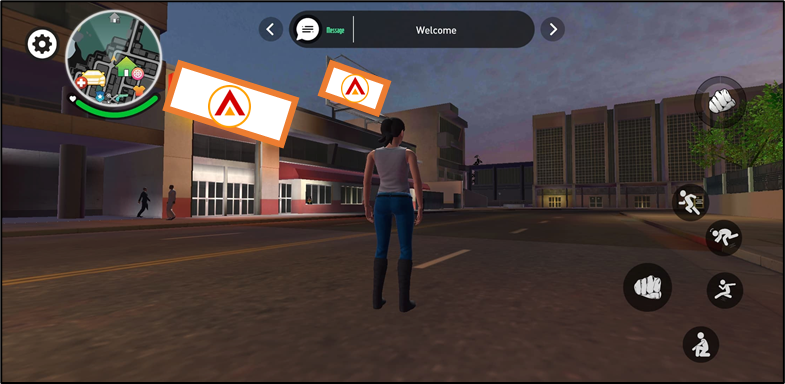Game Spotlight: Pixel Strike 3D from Vulcron
Canadian developer Vulcron has been successfully monetizing its retro-inspired FPS Pixel Strike 3D with InGamePlay ads for nearly year now. So we asked the team at Vulcron to tell us about their experience integrating in-game advertising into the fast-paced shooter.
A Brief History of Pixel Strike 3D
Released in 2016, Pixel Strike 3D was Vulcron’s first foray into the world of mobile gaming. And it’s proven a successful one; the FPS now has over 5 million installs on the Google Play Store alone, as well as a well-received Steam version of the game available.
In-Game Advertising Integration
In Pixel Strike 3D, Vulcron has placed InGamePlay brands ads tactically as their players move through the game’s maps, focusing on high-traffic areas and chokepoints. An ad is also placed on the game’s character customization screen, which is an excellent move as the extended dwell time translates into a lot of impressions.
What were the inspirations and core design pillars behind Pixel Strike 3D?
In today’s gaming world many games are bloated, require high-end devices to play, and take a long time to get comfortable playing. Our goal with Pixel Strike 3D is to create a fun, lightweight, easily accessible first-person shooter that people of any skill level can jump right into and enjoy.
How did you find using the SDK to integrate InGamePlay ads into your game?
Integration was very easy and worked out of the box without any extra code or implementation on our end. We were able to easily set up ad prefabs and place them around our game.
Tell us about how you designed your ad placement strategy
Our ad placement strategy is fairly straightforward. We place ads around each map in areas that we find to be high traffic such as hallways or entranceways, as well as the main menu where players spend time customizing their character.
How do you think in-game advertising compares to traditional mobile ads?
In-game advertising is a great way to monetize without intruding on the player’s gameplay experience. We’re able to use existing map decorations like billboards and signs and turn them into revenue-generating ads without any negative impact on player experience.
Pixel Strike 3D is a fast-paced FPS, did that present any challenges when it came to placing and optimising your ad placements?
Even though Pixel Strike 3D is a fast-paced game, we’re still able to effectively utilize in-game advertising because of how AdInMo can track impressions across multiple placements with minimal screen-time.
More…
It’s going to be the best Christmas ever, for in-game advertising
The ‘golden quarter’ is usually exemplified by retailers and luxury brands throwing huge budgets at extravagant festive ad campaigns. But amid soaring Covid cases, national lockdowns and travel restrictions, rising unemployment and uncertainty over Brexit, advertisers...
AdInMo extends supply-side network with Mobfox integration
AdInMo integration opens new channel for Mobfox clients to target mobile gaming AdInMo, the mobile InGamePlay Brands Ads platform, has completed an integration with global programmatic advertising SSP, Mobfox, extending AdInMo’s supply-side network and providing...
Maintaining Player Immersion
In-game ads are, of course, a necessity of business rather than design, but they can still be implemented with a level of artistry, to maintain your creative vision. Player Immersion is one of the most important concepts in game design, and it’s one that traditional...



